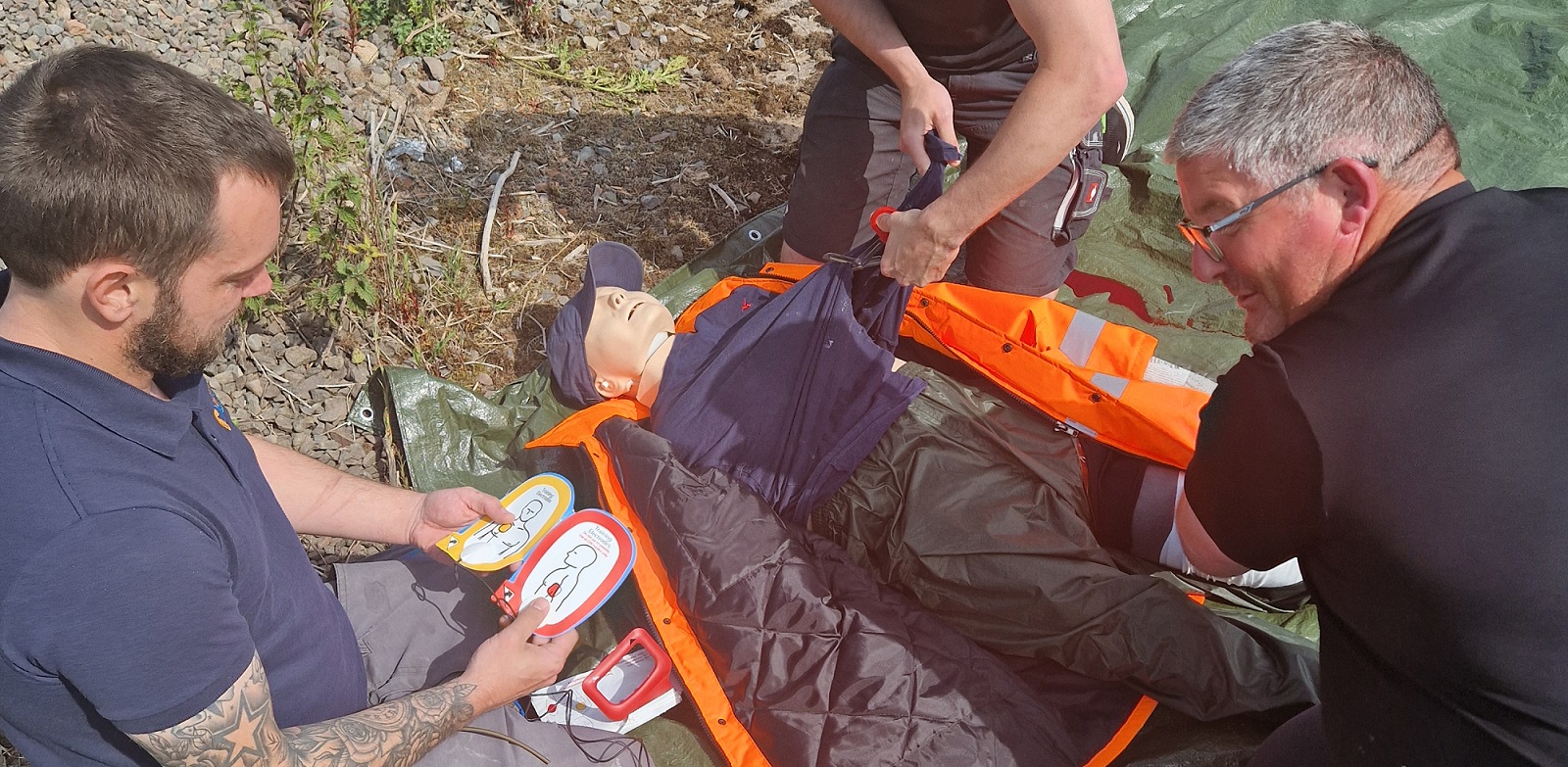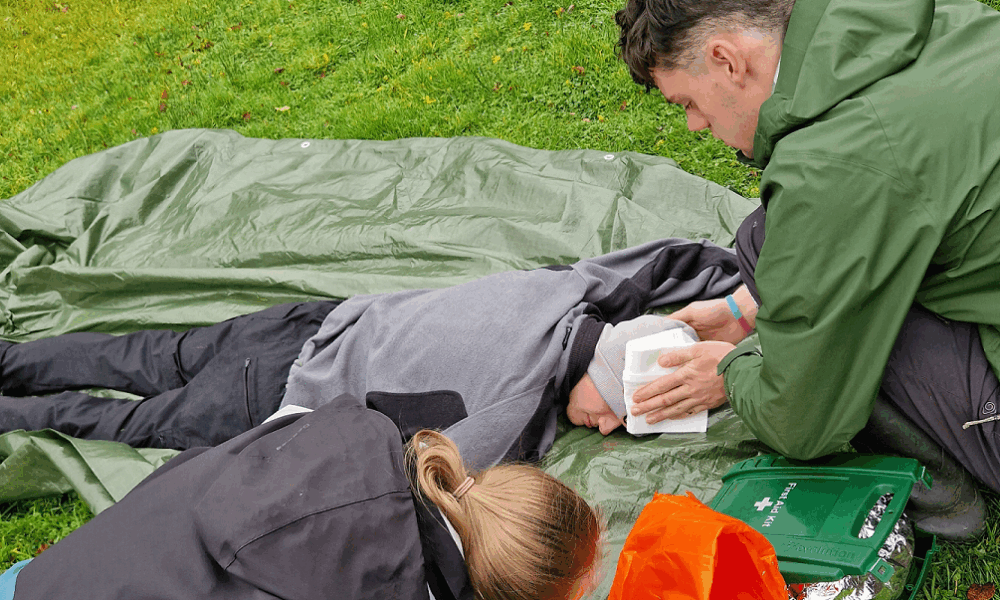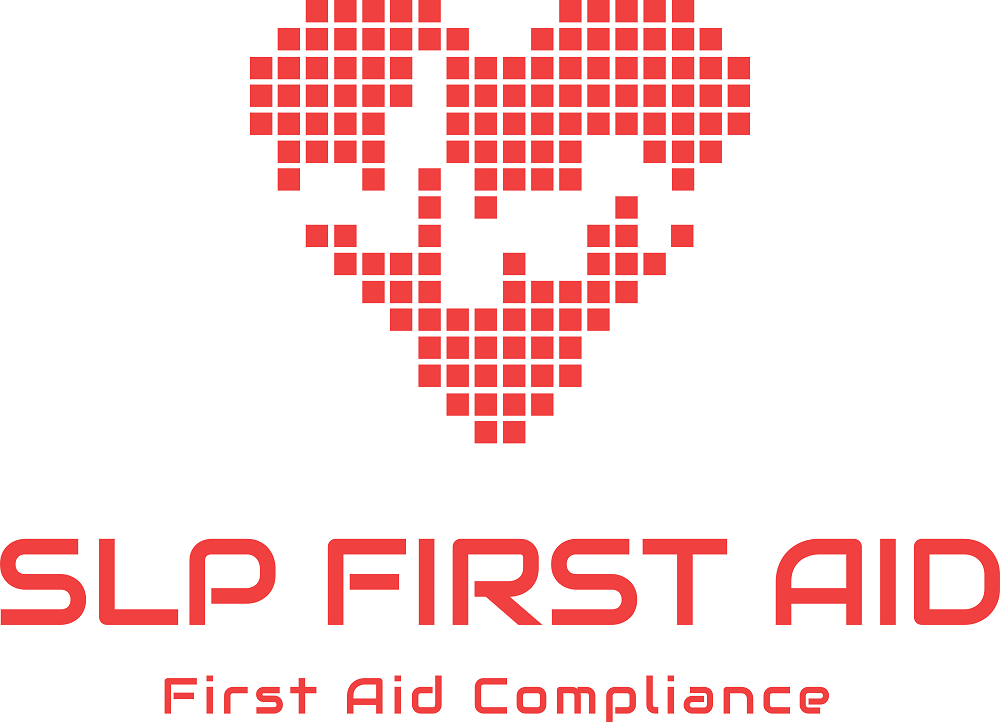Emergency first aid to save a life
How you react if you are involved in an emergency incident or are first on the scene may be critical to saving lives. This applies to both personal and work environments.

Knowing how to give emergency first aid and thinking through scenarios in advance will help you be prepared practically and mentally.
Emma Thomas, Director at Trackplot, recently met with Sean Ansbro, owner of SLP First Aid, to discuss how to get ready for an emergency situation.
Emma: Sean, tell us your background and how you became a First Aid Trainer.
Sean: I have been providing training for over 10 years now. At the start of my career I served in the Royal Marines and acted as a team medic on two active tours of duty. I gained the valuable skills needed to deliver immediate care to anyone injured and keep them alive until further help arrived. I went on to be part of an emergency response team in the pharmaceutical industry, operating as a trauma trained first aider before setting up SLP First Aid.
Emma: What is the most important piece of first aid advice you can give.
Sean: Without doubt it is the importance of providing medical attention immediately after an injury occurs. Starting with the most life-threatening issues like catastrophic bleeds, airway obstructions and Cardiac arrest. Having the tools in place to be able to contact the emergency services quickly is also key. Often overlooked is what the First Aider goes through after an emergency situation. It can play on your mind and take its toll on your mental health. You need to ensure your own safety and well-being and if you become overwhelmed, there are organisations who are there to help such as Mind and Chest, Heart and Stroke Scotland.
Emma: In your experience what reactions are a hindrance rather than a help in an emergency?
Sean: On most courses I deliver, candidates raise that they fear being blamed if the patient has a poor outcome, which can lead to hesitation. We look at legal protections such as the Social Action, Responsibility, and Heroism Act (SARAH Act), that protect individuals who act in a social or heroic capacity to help others in an emergency. This knowledge gives candidates the confidence to act when needed.
Emma: So how can we prepare to avoid reacting in an unhelpful way?
Sean: By taking a ‘condor moment’, a quick pause to calm yourself and look at the bigger picture before rushing into a situation, is important as a responder to ensure your own safety first, protecting yourself from any potential danger before assessing the needs of the casualty.
Emma: What do you think are the most life-threatening injuries and why?
Sean: One of the most life-threatening injuries I teach candidates to deal with is Catastrophic Bleeding. This is an extreme bleed likely to cause death in minutes. On my Forestry First Aid course candidates are taught how and when to use trauma dressings, wound packing, haemostatic dressings and the application of torniquets, to effectively stop a catastrophic bleed before treating for shock or any other potential injuries.
Emma: Having worked in a variety of sectors, which industries do you think are most at risk from life-threatening injuries?
Sean: Construction, Agriculture, Forestry, and Fishing constantly have the highest number of life-threatening injuries in the UK. In most of these industries you can find yourself working in remote locations where help can take additional time to arrive. While treating a casualty in these locations the environment plays a huge part in your decision making, having to consider keeping the casualty warm, dry and ensure you can be seen by the emergency services.

Candidates gaining practical experience on SLP First Aid's Forestry First Aid training.
Emma: What is your advice to employers and workers to anticipate and prevent accidents?
Sean: As well as assessing risk and putting control measures in place, it is essential that you have a plan for if the worst was to happen. Looking at a job site and asking the question ‘What would I do if we had a casualty in this location?’ can save vital time in an emergency situation. Also making sure that everyone involved on a job is fully briefed on the emergency plan can reduce confusion and lead to a more coordinated response. This combined with staff who are confident in their training and have the correct equipment to hand can make the difference should someone be injured.
Emma: Talk us through the types of training you provide at SLP First Aid?
Sean: I provide a wide range of regulated First Aid training courses from First Aid at Work to Outdoor First Aid and Forestry First Aid (+F). My courses are designed to give as much practical experience as possible so that the candidates can feel empowered, and walk away confident in their knowledge and abilities. I use the most up to date equipment such as wound simulators for wound packing and torniquet training and QCPR manikins which give real-time feedback on the quality of CPR being delivered via an APP. This helps to add a sense of realism to the training, giving learners the chance to put their skills into practice during realistic scenarios. Also on offer are a range of Driver CPC and Health and Safety courses such as Fire Warden training where candidates have the opportunity to extinguish a real fire with use of an LPG simulator.
More about SLP First Aid
-
SLP First Aid is based just outside of Canonbie in Dumfries and Galloway.
SLP First Aid offers First Aid and Health and Safety training to individuals, groups and businesses across Dumfries and Galloway, The Borders and Cumbria.
SLP First Aid brochure
W: www.slpfirstaid.co.uk
E: sean@slpfirstaid.co.uk
How Trackplot can help
-
Trackplot provides different solutions and functionality to suit the activities and environments your workers operate in.
- Trackplot World is satellite-based to protect workers located in remote and wilderness areas.
- Trackplot Mobile is for workers who have access to strong, reliable mobile phone reception.
- Trackplot’s Met Office Weather Warnings and Environmental Mapping allow you to assess current and forthcoming weather and environmental conditions. Using this data you can anticipate the vulnerability of your workers to plan schedules, and understand vulnerabilities in an emergency situation.

